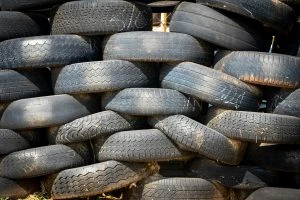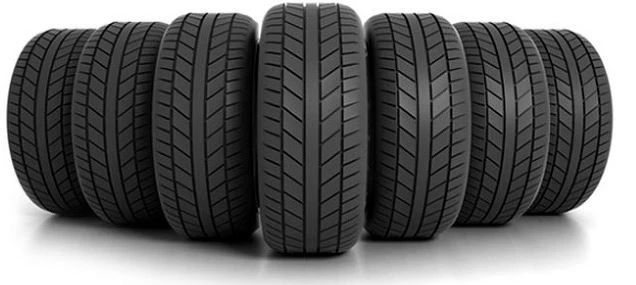Car Maintenance
When Should I Disconnect My Car Battery?
There are various instances where you might need to disconnect your car battery, including performing maintenance, replacing the battery, resetting the car’s computer, or storing the vehicle for an extended period. However, not every motorist knows how to perform this rather simple task.
Let’s take a look at how to disconnect your car battery in a safe and practical manner.
When Might You Disconnect a Car Battery?
One common reason to disconnect your car battery is during maintenance or repair work. If you are working on any part of the car that involves the electrical system, such as changing out fuses, installing new electrical components, or even doing work under the bonnet near the battery, it’s vital to disconnect the battery first.
This precaution prevents accidental short circuits or electric shocks. Another scenario is when you are replacing the battery itself. Before removing the old battery, you must disconnect it to avoid sparks or damage to the car’s electrical system. Furthermore, disconnecting the battery can reset the car’s onboard computer, which might be necessary if you are experiencing persistent electronic issues or error codes.
Finally, if you plan to store your vehicle for a long period, disconnecting the battery can prevent it from discharging completely, which can save you from needing a jump-start or replacement batter later on.

How to Disconnect Your Car Battery
To disconnect a car battery, start by gathering the necessary tools: a spanner or pliers to loosen the battery terminals, and safety gear like gloves and glasses.
Before you begin, ensure the car is turned off and the keys are removed from the ignition. This step is crucial to prevent any accidental electrical discharge.
Locate the battery, which may be found under the bonnet in the engine compartment, or in some vehicles, it might be in the boot or even under a seat. Identify the positive and negative terminals – the negative terminal is usually marked with a minus (-) sign, and the positive with a plus (+) sign.
Begin with the negative terminal. This is a safety measure to reduce the risk of short circuits. Using the spanner, loosen the nut on the negative terminal clamp. Once loose, carefully lift the clamp away from the terminal. Be sure to tuck it aside where it cannot accidentally come back into contact with the terminal.
After the negative terminal is disconnected, repeat the process with the positive terminal. Loosen the nut and lift the clamp away. It’s important to note that while working, avoid touching the spanner to any other metal parts of the car, as this could create a dangerous short circuit.
Once both terminals are disconnected, you can proceed with whatever maintenance or repair tasks are necessary. If you are replacing the battery, remove it carefully, taking note of its orientation to ensure the new battery is installed correctly. To reconnect the battery, reverse the process: attach the positive terminal first, followed by the negative terminal. Ensure the clamps are securely fastened to prevent any loose connections, which can lead to electrical issues or difficulties starting the car.
Whether for maintenance, repairs, or long-term storage, disconnecting your car’s battery is all about safety and preventing potential damage to your vehicle’s electrical system. Always follow the correct procedures and safety precautions to maintain the integrity of your car and avoid any mishaps.
Is That Second-Hand Car Reliable?
So you’re in the market for a new vehicle, but don’t want to dish out top dollar. You turn to the second-hand market, wondering if you can score yourself a bargain. What should you be on the lookout for? Is there any way to determine how reliable a used car is?
Due Diligence
The best place to start is with research. Look into which makes and models are known for their reliability. Consider your social circle, who drives what, and if they’ve encountered any problems. Jump on message boards and look for opinions from owners. Read motoring reviews, which should offer insights into common issues and the overall satisfaction of other owners.
Once you’re out and about visiting car yards or private sellers, begin to compare the options you narrow down to. When it comes to reliability, the first thing you want to do is check the history of the cars you are looking at, so turn to vehicle history reports, service records, and check the relevant register in your state or territory to ensure the car hasn’t been written off in the past.
Inspecting the Vehicle
Begin with a walk-around to look for signs of damage, rust, or mismatched paint that might indicate previous repairs. Check the condition of the tyres to ensure they have sufficient tread depth and that there are no signs of uneven wear, which could signal alignment issues or suspension problems. While you’re at it, make sure you also inspect the lights, windows, and mirrors to ensure they are functional and free from cracks or any other damage.
Lift the bonnet and examine the engine bay for any signs of leaks, corrosion, or worn belts and hoses. The oil, coolant, and transmission fluid should be at appropriate levels and appear clean. Dirty or low fluids should prove cause for concern, as it may signal a neglectful owner.

There is only so much that an untrained individual can look for when inspecting under the bonnet, so ask a trusted mechanic or third-party inspection service to perform a more detailed inspection. These individuals may be able to identify potential issues that might not be apparent during your inspection and test drive.
Inside the vehicle, make sure that key features like air conditioning, heating, infotainment system, power windows and so forth are all in working order. If you fail to pick up any problems at this stage, it could lead to complications later on, and a big bill.
Driving the Vehicle
Arguably the most telling aspect of evaluating a second-hand car is the test drive. Pay attention to how the car starts, accelerates, and handles. The engine should start easily and run smoothly without unusual noises. Check the brakes for responsiveness and listen for any squeaking or grinding sounds, which can indicate worn brake pads or rotors. Test the steering for smoothness and ensure there are no vibrations or pulling to one side.
Is it the Right Car for You?
While you can never be certain that you’re not acquiring a lemon, you can form some idea as to the likely reliability of a second-hand vehicle by completing diligent research, inspecting the vehicle, and driving the car as part of a test drive.
It’s wise to follow these steps to ensure that you make an informed decision, reducing the risk of purchasing a used car that turns out to be a lemon.
Get More Life Out Of Your Tyres

We’re all facing rising costs for this, that and the other thing, and tyres aren’t cheap. I think that the car wears more expensive “shoes” than I do. You should never, ever skimp on tyres and get about on rubber with a barely legal tread depth. However, nobody wants to spend more than they have to, so how can you extend the life of your tyres so you get the most out of them and they last as long as possible?
Rotate your tyres regularly. This means every 10,000–13,000 or thereabouts. How do you rotate your tyres? This depends on your drivetrain, and whether or not you use directional tyres (i.e., left-hand and right-hand tyres). The instructions sound like dance steps but they’re a lot easier. If you get easily muddled, then mark your tyres with chalk before you start (e.g., FL for front left, etc.).
- For a front wheel drive vehicle, the front tyres go to the back on the same side. Then the back tyres go to the front and the opposite side (i.e., they swap diagonally).
- For a rear wheel drive vehicle, the rear tyres go to the front on the same side. Then the front tyres go to the back on the opposite side (i.e., a diagonal swap).
- For a 4×4, front left swaps places with rear right, and front right swaps with rear left (everything swaps diagonally)
- With directional tyres, the left-hand tyres swap places with each other. The same happens on the right.
Get your wheels aligned if you notice problems. The problem usually shows up in two main ways. The first is if you spot irregular wear on your tyres. You’ll only spot this if you check your tyres regularly, which is something we should all do. The other way that poor alignment shows up is if your car pulls to one side. To test this, find a nice straight bit of road that’s fairly empty, position yourself in the middle of your lane and let go of the steering wheel (you may want to disable any driver aids such as lane keeping assistance). If your car pulls to one side, rather like my dog catching a sniff of a dropped fast food wrapper on the side of the road, then your alignment is out of whack and needs tweaking.
Use the right tyre pressure. The right pressure will depend on the individual tyre, your type of vehicle, whether or not you’re towing and even the temperature. Get to know what your car needs – you’ll probably find this in the driver’s handbook that came with your car, probably in the glovebox – and check it on a regular basis. Maybe not every time you stop to top up, but more often than you get the oil changed.
Don’t drive aggressively. OK, when you were in your late teens or early twenties, it might have seemed super cool to rev off and screech to a halt in a way that left black marks on the road, but you know what those black marks are made of, don’t you? That’s bits of your tyres left on the surface of the road, meaning that your tyre won’t have lasted as long as it would have. Enjoy your driving by all means, but grow up a bit and don’t be so forceful in how you start and stop. It’s easier on your car as a whole and also helps with your fuel bill (something we can all do a bit more of these days).
If stuck, don’t keep spinning. We’ve all been there now and again, especially if you like a bit of off-road driving. You get a wheel into somewhere it loses traction and it starts spinning. If you’re like most people, you’ll put your foot down and spin it some more just in case it grabs and moves this time. Unfortunately, slipping is slipping, and the only things you’ll do are (a) wear your tyres down a bit more than you would have and (b) dig yourself in deeper. Instead, get out, have a look at how you’re stuck and see what you can do.
If your car is parked up for a long time, or if you have a set of tyres in storage, keep them at the right temperature (i.e., not too hot) and out of the direct sunlight, as UV breaks down the rubber compounds in the tyres, leading to what is known as dry rot.
Don’t carry too much in your car. The more weight your tyres have to support, the quicker they’ll wear out. Although we all need to take big loads now and then, the less you can cart about on a regular basis, the better it will be for your tyres and for your fuel bill (these two often go together). For those of you who drive BEVs, don’t get too smug about the fuel bill thing – reducing the weight you cart about will also get you more range from a single change. It’s simple physics, folks!
Avoid the rough stuff. In some cases, you can’t avoid rough roads simply because of where you live. However, if you can avoid potholes, ruts, etc., this will help your tyres last longer. It would be nice if there were fewer of these potholes, etc. but that’s another story. At best, the rough stuff can wear at your tyres more; at worst, going into a pothole can slash the side of your tyre (ask me how I know this…).
However, even if you do all these things, the Second Law of Thermodynamics decrees that your tyres will eventually wear out and need replacing. When that time comes, as stated above, don’t skimp or try driving on worn tyres. It’s just not worth it.

The Ins and Outs of Motor Oil
Among the most bang for your buck you’ll get when making any sort of repairs or maintenance to your car is when you add a quart or a litre of motor oil to the engine.
The Role of Vehicle Lubricants
Modern engines, transmissions, and differentials require modern lubricants to keep them healthy. Think of motor oils, transmission fluids, and gear oils as the lifeblood of your vehicle.
As the mechanical technology in motor vehicles has increased, so has the need for oils engineered to perform in these technological marvels. That’s why choosing the correct motor oil will keep an engine working properly for many years.
And why’s that? Well, let’s take a look at the benefits.
How Motor Oil Benefits Your Car
For starters, the motor oil will protect your engine against frictional wear. It will also neutralise acid build up, as internal combustion naturally produces sulfuric acid. If that’s not enough, motor oil also suppresses corrosion and helps cool the power-plant.
The additive package in motor oils also contains dispersants, detergents, anti-wear agents, viscosity modifiers, anti-foaming agents, and pour-point depressants. The latter will allow the oil to pour at very cold temperatures.

Choosing the Correct Lubricants
Lubricant specifications and performance parameters are enumerated by: the Society of Automotive Engineers (SAE), who established the viscosity requirements; the American Petroleum Institute (API) and the International Standardisation and Advisory Committee (ISAC), who established the service classifications.
There is also the Association des Constructeurs European d’Automobiles, which parallels the standards established by the API and ISAC, but mainly for engines of European manufacture.
Don’t be confused by all the initials and oil classifications. Every time there are improvements made to engines, there are also improvements made in the lubricants that protect them.
Current motor oil service classifications will protect all current and previous year model vehicles. There are separate classifications for spark and compression ignition engines; gasoline or diesel fuelled, but most oils are classified as multiple-use, and are appropriate for either type of engine.
What to Look Out For
The most important measure, viscosity is the measurement of the internal resistance to flow of any fluid; the higher the viscosity number, the greater the resistance to flow.
For warm weather motoring, motor oils with a 30 or 40 viscosity rating are selected. For cold weather driving, the viscosity rating should be 10 or 20. The advent of multiple viscosity oil has precluded the need to change the oil in the event of a drastic temperature change.
What that means is that a motor oil with a viscosity rating of 10-30 can operate at low temperatures as a 10 viscosity, and when the engine is warmed up and operating at higher temperatures, the oil performs as a 30 viscosity.
Another measurement of a motor oil is the Total Base Number (TBN). Oils are formulated with an alkaline reserve to neutralise acids. When the TBN has dropped to half the original number, the oil should be changed. This usually coincides with depletion of the other additives.
Ultimately, don’t forget, the type of use the vehicle gets determines when the oil should be changed. If you often drive in peak hour traffic, where there is regular stop-start driving, the oil is likely to need change sooner. On the other hand, long travels on the freeway should extend the service interval. But as with anything related to your car, a bit of proactive maintenance won’t set you back either.